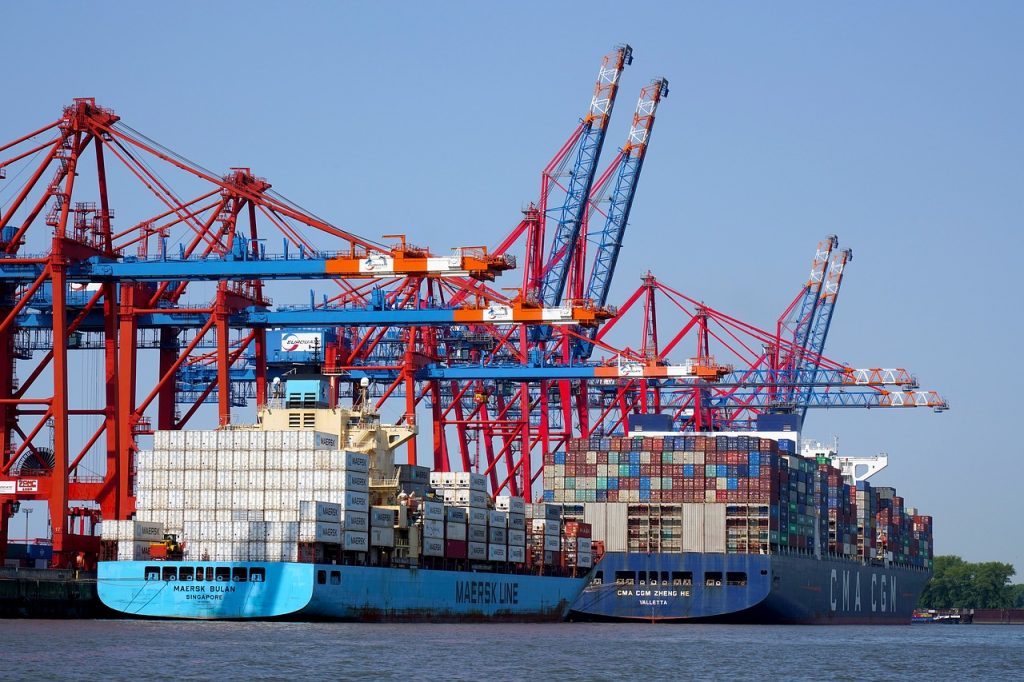Understanding Supply and Demand: The Dynamics of Copper Trading

One of the most important industrial metals in the world is copper. It is fundamental to everything from green energy solutions to industrial machinery, electrical wiring, and transportation.
Navigating the intricacies of this worldwide commodity requires traders and investors to comprehend the dynamics of copper trading.
The fundamental factors influencing changes in copper’s price are supply and demand. However, how does it operate? What factors affect this chain? What are the contributing reasons for this?
This article explores the factors influencing supply and demand as well as how they affect the copper market. In addition, I will discuss what this essential metal’s future holds.
The Basics of Supply and Demand

The fundamental economic concepts of supply and demand control the price of commodities, including copper.
Simply put, prices often decline when supply outpaces demand. On the other hand, prices increase when demand outpaces supply. These changes in supply and demand have the potential to cause notable market swings in the context of copper trading.
The supply and demand balance is sensitive for copper, which is necessary for electrical systems, industrial manufacturing, and the emerging green energy industry.
Any interruption in supply, like a strike in a major copper-producing nation or a spike in demand brought on by technological advancement, can have an instantaneous and frequently significant impact on pricing.
Traders and investors in the copper market must continuously monitor these factors to anticipate price movements and make informed decisions. Explore this page for more information.
Copper Supply: Sources and Influencing Factors
A small number of important nations generate the majority of the world’s copper, with China, Peru, and Chile producing the most. People use extensive mining operations to extract it. Furthermore, the state of the mining sector in these nations has a direct impact on its supply.
A number of external factors can impact mining output, and the extraction process is costly and intricate. Government regulation, especially environmental rules that determine how mining firms operate, is one of the primary factors influencing the availability of copper.
Production and output can be decreased by stricter laws, particularly those pertaining to water use and carbon emissions. Furthermore, production may be momentarily halted by worker strikes or geopolitical unrest in copper-rich areas, leading to supply shortages and higher prices.
Copper Demand: Industrial and Global Applications
Due to its extensive application in numerous industries, copper is in high demand. Because of its exceptional conductivity, copper finds widespread usage in the electrical industry for wiring, motors, and electronic gadgets.
Copper pipes and fixtures are essential for heating and plumbing systems in the building sector. People also use copper in the transportation sector for vehicle components and electrical systems.
The demand for copper has increased recently due to the expansion of the renewable energy industry.
Solar panels, wind turbines, and electric vehicles (EVs) all depend on copper. These are crucial elements of the global movement for cleaner energy.
We can expect this trend to continue, with the International Energy Agency predicting that copper demand for renewable energy technologies could increase significantly in the coming decades.
How Does Supply and Demand Interact to Determine Copper Pricing

Consider a seesaw in a playground. The quantity of copper that is available for purchase is on one side. The demand for copper, or how much individuals wish to purchase, is on the other side.
The supply and demand of copper are equal if the seesaw is at a level. Copper’s pricing remains constant. This is what we call the equilibrium price.
The price of copper decreases if there is more available than consumers choose to purchase (the supply side of the seesaw is heavier). In order to entice customers to purchase, sellers may reduce their pricing. Either a drop in economic activity or an improvement in production efficiency could cause this.
If people want to buy more copper than is available (the demand side of the seesaw is heavier), the price of copper goes up.
Sellers can charge more because more buyers compete for the same amount of copper. This could occur due to rapid industrialization, technological advancements (like the growing demand for electric vehicles), or infrastructure projects.
Factors Affecting Supply and Demand
The price of copper is a delicate balance between supply and demand. Any shift in either supply or demand can cause the price to fluctuate. Understanding these factors is crucial for investors, policymakers, and businesses involved in the copper market.
Here are some of the most important ones that you should know about:
- Production Costs: If it becomes cheaper to mine and produce copper (due to technological advancements or lower energy costs), the supply will increase, possibly lowering the price.
- Economic Growth: When the economy is doing well, people and businesses need more copper for building, manufacturing, and other activities, increasing demand.
- Technological Advancements: New technologies can either increase or decrease the demand for copper. For example, if electric cars become more popular, the demand for copper for wiring will increase. On the other hand, advancements in energy storage technology could reduce the overall demand for copper in some applications.
- Government Policies: Taxes, regulations, and subsidies can affect copper’s supply and demand. For instance, a government subsidy for copper mining could increase supply, while a tariff on imported copper could reduce supply and raise prices.
Price Dynamics: Understanding Copper’s Market Volatility
Copper is popular for its price volatility. We can often see its fluctuations as a barometer of global economic health. Copper is referred to as “Dr. Copper” because its price trends tend to reflect the state of the economy.
During periods of economic growth, industrial activity surges, leading to increased copper demand and rising prices. Conversely, during economic downturns, demand for copper typically decreases, leading to lower prices.
Beyond global events, market speculation and the actions of large institutional investors also influence copper’s price.
Futures contracts and other financial instruments allow traders to bet on the future price of copper, adding another layer of complexity to its price dynamics. As a result, copper’s market is often subject to sudden and sometimes unpredictable shifts, making it a challenging yet potentially rewarding commodity for investors.
Trading Copper: Key Marketplaces and Instruments

The London Metal Exchange (LME) and COMEX are the two most well-known systems for trading copper on major commodities markets.
Futures and options contracts, which enable traders to fix prices or make predictions about future price fluctuations, are used to trade copper on these markets.
Contracts for the purchase or sale of copper at a fixed price at a given time are known as copper futures. Manufacturers use these contracts as a hedge against price swings and traders hoping to profit from them.
On the other hand, options offer traders flexibility in their trading methods by granting them the right, but not the responsibility, to purchase or sell copper at a predetermined price.
Conclusion
Understanding supply and demand dynamics is crucial for anyone involved in copper trading.
The metal’s global importance and susceptibility to market forces make it one of the most interesting commodities to trade.
With its wide range of applications, particularly in green energy and technology, copper demand is set to remain strong.
However, potential supply challenges and external factors like economic indicators and environmental regulations will continue to influence the market.
Read Also:













